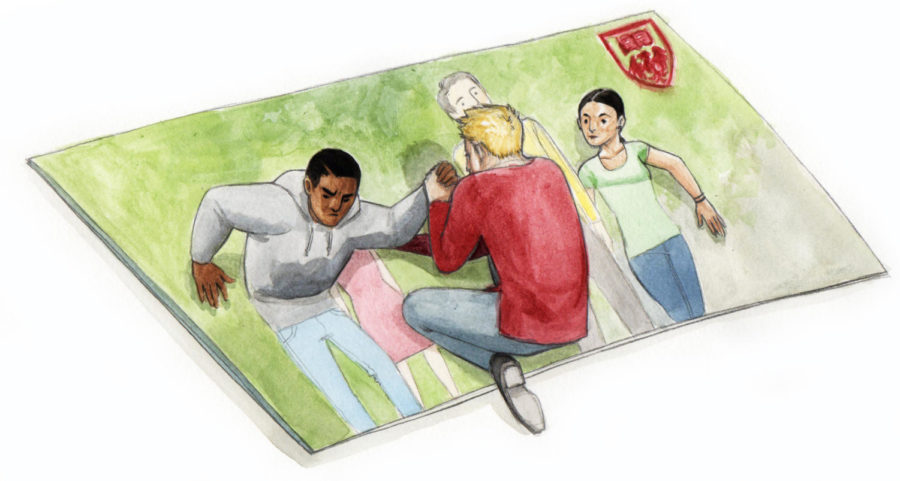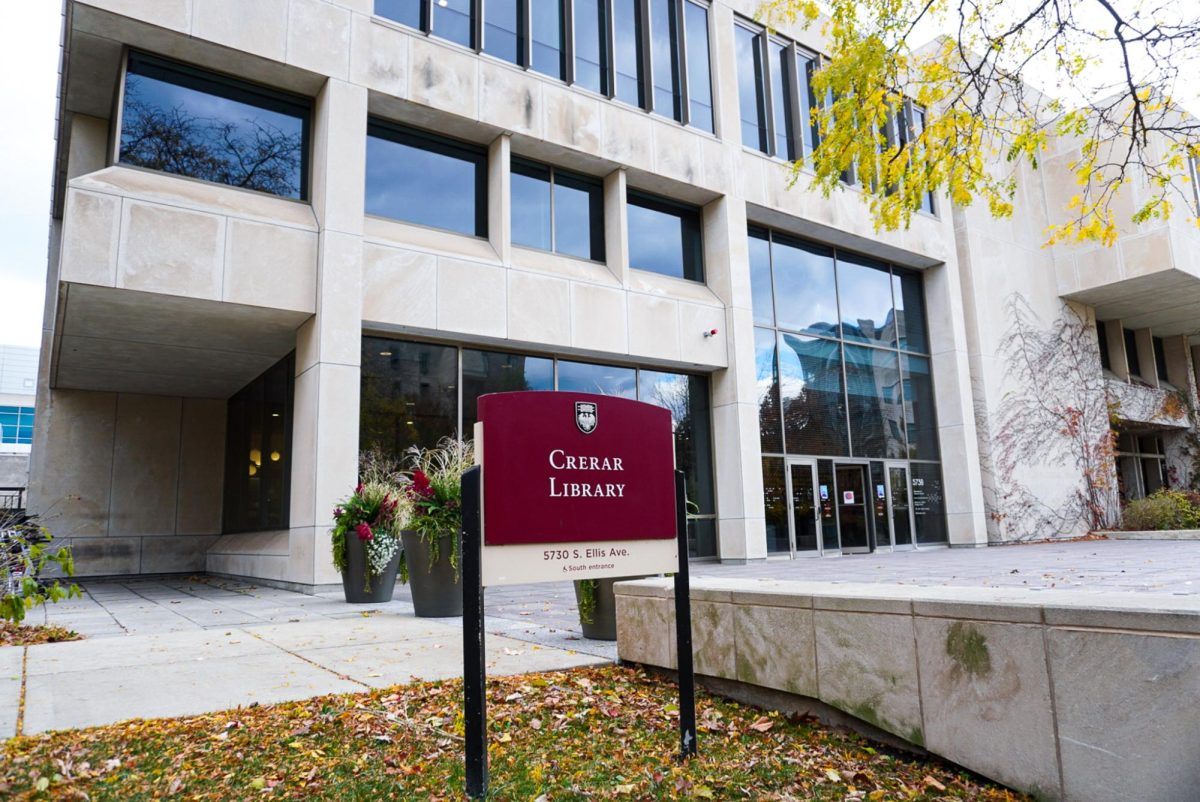I can still recall the uneasy feeling that rose in my stomach as I surveyed the crowd during the bagpipe processional. In a mob of over 1,000 people, I began counting the people of color within my line of vision on my hands. A wave of skepticism washed over me, and I found myself wanting to recoil back into my mother’s embrace where I knew I would be understood, respected—loved. The realization that I was “different,” paired with the novelty of college, presented itself as a doubly ostracizing force. I faltered for only a moment, quickly disregarding my feeling of apprehension and diving into each cheesy icebreaker whole-heartedly. But my growing list of friends and acquaintances didn’t satisfy my desire to have Black friends. I held my breath, anxiously awaiting the day when I would require the type of support and solidarity that can only come from a shared racial experience.
Universities boast about their progressive and critical way of thinking, showcasing a diverse cast of students on the covers of their brochures, yet they remain unresponsive to minorities’ issues. What these brochures don’t mention is the lower retention rates many minorities face, as well as a host of other issues. In my first few weeks at UChicago, I often felt like I was simply a statistic or a token—not a respected, contributing part of the University. Thankfully, the Organization of Black Students washed away this apprehension while simultaneously fulfilling my dream of building friendship and solidarity with my black peers. The fleeting doubt that many minority students beside me experience could be greatly minimized if the University championed cultural organizations instead of solely emphasizing the fact that minorities exist on campus, as if it is trying to prove that it can meet some quota.
First year is a huge (and often rocky) transitional period for all students; this makes the support of cultural organizations for minority students increasingly important. Unfortunately, this is also the time when students know the least about these organizations. The University should play a more active role in connecting incoming students to cultural organizations like the Singaporean and Malaysian Student Association (SAMSU), or the Malaysian Student Association. Of course these RSOs should recruit new members just like any other, but placing the responsibility solely on these organizations says, “This is your problem.” To truly create a more welcoming campus, the University should task itself with assessing and aiding the transition of minority students. Even something as small as posting a schedule of cultural events within the Diversity & Inclusion webpage could help students find more events and feel more included. This way, students aren’t merely reading about inclusion in abstract terms, but reading how to actively become a part of a solidarity movement. The University should not only post events, but also host them throughout the year. Cultural RSOs are visible on campus only leading up to their showcases or during times of social unrest. In other words, the minority voice is only palpable as a form of entertainment or as a form of resistance. This does not sound like an environment that is inclusive of or conducive to fruitful cross-cultural conversation. If the University organizes cultural events independent of any RSO, it sends the message that diversity is important for everyone—not just minorities. This would tear down the conditioning that labels minorities as “Other.” Furthermore, the University should look at cultural RSOs as a partner with whom it has a mutualistic relationship. They are the foot soldiers fighting for the “respectful and inclusive environment” the University strives for, and the administration should take advantage of that.
Even if the University does not have sufficient manpower to plan and organize events regularly, it still possesses the financial means. The simplest way to support and strengthen cultural RSOs is to fund their events, yet many of these RSOs remain greatly underfunded. If diversity and inclusion is of importance campus wide, why are cultural RSOs lumped in with Badminton and Bridge Club? While it’s clear that cultural RSOs target specific students for their membership pools, topics of diversity and inclusion are a campus-wide concern. The administration is tacitly diminishing the importance of this, and again relinquishing responsibility.
Placing cultural RSOs on the same playing field as other RSOs not only undermines the University’s dedication to diversity and inclusion—it is also nonsensical. Cultural RSOs are forced to compete with organizations that make a profit when applying for SGFC (Student Government Finance Committee) funding. Though cultural RSOs demonstrate a greater financial need and play a more pivotal role in a building a safe, welcoming campus, the committee largely favors organizations whose events have made a profit in the past. Cultural RSOs are thereby constantly disadvantaged since solidarity and support are—and should continue to be—priceless. Making money is not their purpose. Furthermore, many minority students are often economically disadvantaged making it all the more inappropriate to turn these community building events into profitable exchanges. While offering funding through the Office of Multicultural Student Affairs is a good step, it remains just that: a step. The University is in many ways overlooking its biggest asset. The success of these organizations directly correlates with a positive campus climate and unity among students. Simply fostering the growth of cultural RSOs would go a long way in making the open, welcoming environment depicted in its brochures a reality.
A full list of UChicago’s cultural & ethnic RSOs can be found at https://blueprint.uchicago.edu/organizations.
Shayla Harris is a second year majoring in Comparative Race and Ethnic Studies.







